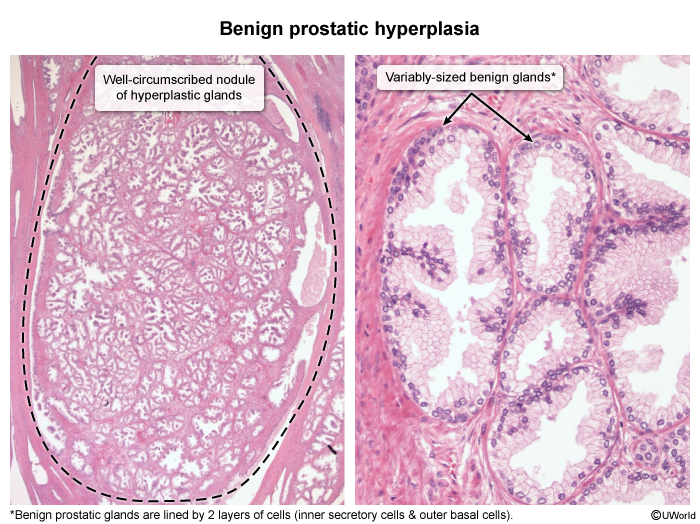Benign Prostatic Hyperplasia (BPH)
Article Sections
Introduction
Benign prostatic hyperplasia (BPH) is a common condition that affects most men as they age. It is characterized by enlargement of the prostate gland with progressive urinary obstruction. Treatment includes both pharmacologic and surgical options.
Pathophysiology
BPH is related to hormonal changes that occur as men age. Circulating testosterone is converted to dihydrotestosterone (DHT), the more active form, by 5-alpha reductase in prostatic stromal cells. Binding of DHT to prostatic androgen receptors leads to increased production of fibroblast growth factor, transforming growth factor-beta, and, likely, other growth factors, which stimulate proliferation and decrease apoptosis in prostatic tissue.
In BPH, stromal and glandular hyperplasia in the periurethral (transition) zone can impinge on the urethra, leading to impaired voiding and incomplete bladder emptying (Figure 1
Continue Learning with UWorld
Get the full Benign Prostatic Hyperplasia (BPH) article plus rich visuals, real-world cases, and in-depth insights from medical experts, all available through the UWorld Medical Library.
Figures
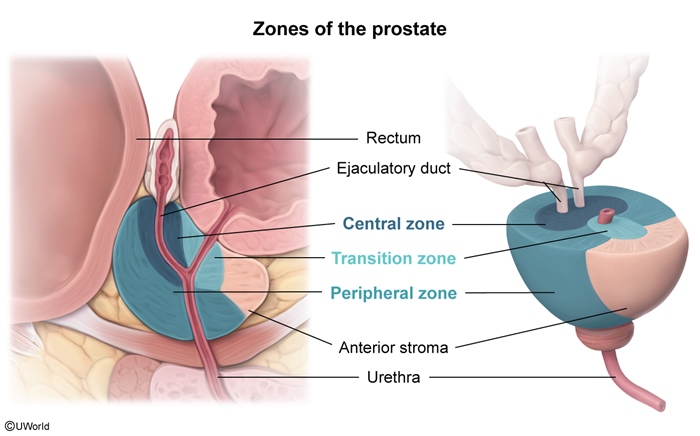
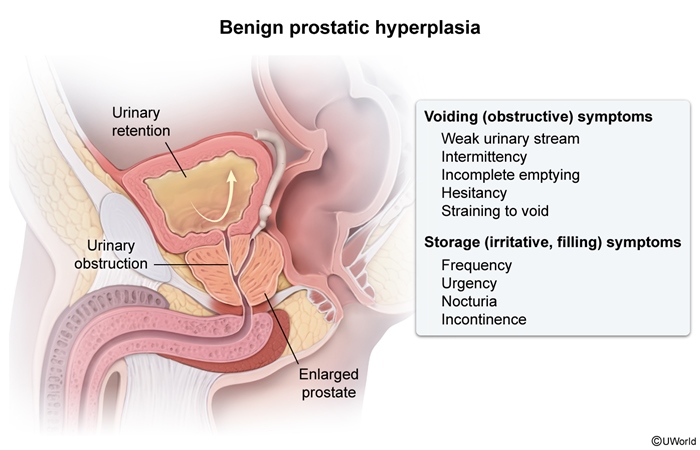
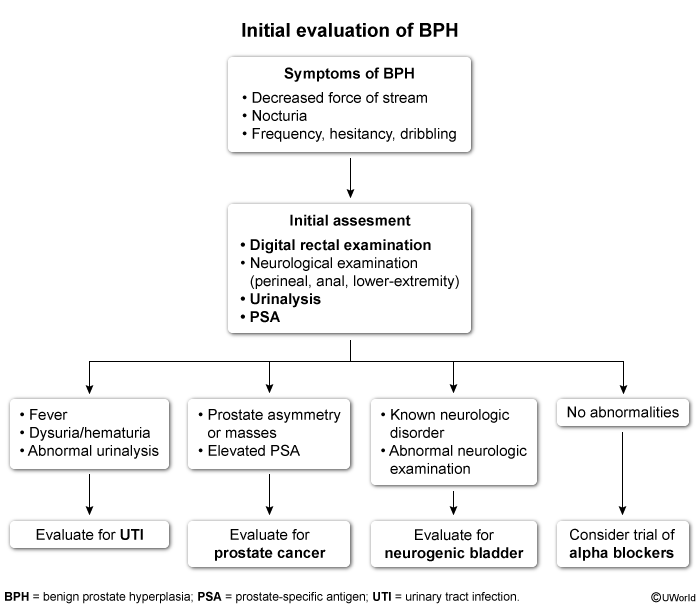
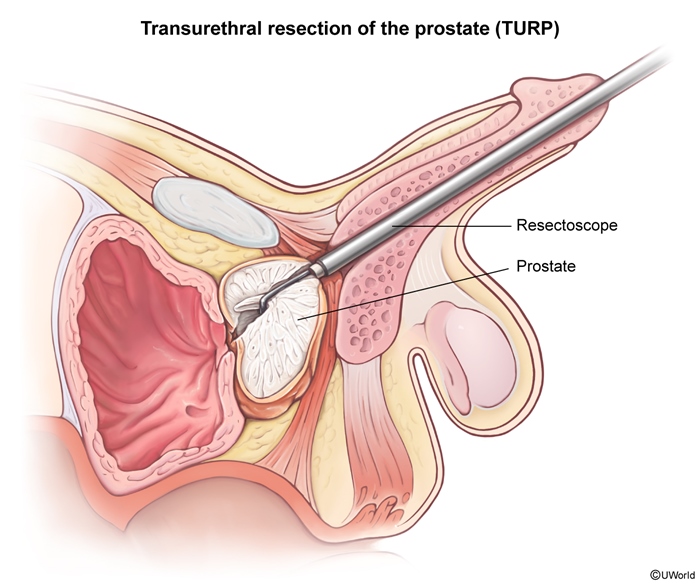
Images
